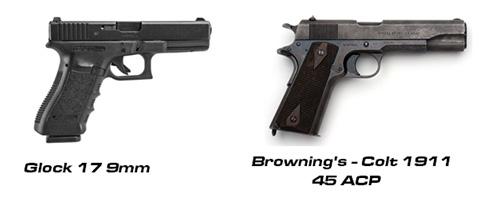ERGONOMICS OF THE MODERN PISTOL
August 11 2016
You just picked up a brand new Glock 17, and of course without hesitation, want to test out your new "Purchase", immediately heading to the shooting range where you meet up with a good friend of yours, who brings his Colt 1911. After a few shooting warm-up drills, you each decide to try out the other's firearm. The very first thing you notice is how different they feel from the other in your hand, due to the differences in grip angle. So why exactly are these pistol grips so very different, and which is the correct one? This question is actually older than you might think, and believe it or not, both grip angles are correct…
The Luger Pistol
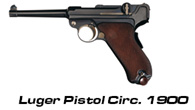
John Browning and the 1911 Pistol
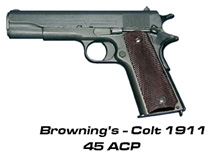
The grip angle on the 1911 platform originates from research that Gun-Innovator John "Moses" Browning conducted in designing, essentially mastering a new platform. Prior to the introduction of the 1911 pistol, most handguns were revolvers and the few semi-automatics that existed at the time, were predominantly located in Europe (i.e. the Luger). Browning improved on the early semi-automatic designs, by designing a two (2) piece weapon (frame and slide) with the top portion sliding back and forth to load and eject the ammunition. In addition, Browning needed to find an angle that would conform to shooting the semi-automatic pistol comfortably, and provide a solution for easier management.
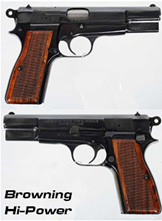
Two (2) key factors that evolved from that research were a "Spur" or "Beaver Tail" that extends from the top of the rearmost portion of the grip, and the angle of the grip itself. The "Beavertail" aligned the shooter's hand higher on the grip, enabling greater control, while keeping it clear of the slide's movement. The angle that proved to be the greatest asset to the shooter, is relatively the same angle that a human wrist locks into when handling force similar in relation to a punch. This same research transpired to the grip angle that is now used on many other modern instruments like, power drills, saws, and other similar tools, where force is being applied from the wrist. With its introduction, the 1911's simplified design proved to be slightly more mechanically reliable, than the upward folding bar seen on the Luger.
Many pistol designs that have followed Browning's 1911 progression in the last century, still implement the same grip angle to help the wrist of the firing hand adopt a natural posture when firing the weapon. Even after the introduction of "double-stack" magazines (another John Browning invention, first introduced on the Browning Hi-Power), the grips on the weapon were wider to accommodate the larger magazines, but the angle of the grip didn't change a bit. The design that was utilized with this angle, encouraged comfort and stability for the shooter's wrist which equates to a more enjoyable experience for those long days at the range.
Modern Grip Angles
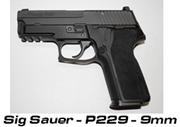
Even in today's world of space-age composites and alloys, pistol grips still employ one of these two (2) major designs. The grip is either angled to put the shooting wrist in a posture as if you were going to punch something, aligned for shooter comfort, or angled to enable the shooter to point at the target with the index finger, and align the muzzle as close to the target as possible.
So which is better?
The simple answer is the one you find the most comfortable and natural. If you select a weapon that is angled for comfort, and desire to learn to shoot more instinctively, then consider "punching" the target, as this will help you to instinctively line up your barrel on target. If you decide on a grip angle that allows for a "point" (point a finger) style of alignment, extending the wrist forward into the pistol will ensure the felt recoil is still comfortable to your wrist. Either method of shooting is relatively easy for even novice shooters to adapt to functional use.
Relatively, the best methodology for the modern educated shooter to adopt, is ensuring both comfort with the firearm as well as constantly, and equally important, consistently training to both gain and keep proficiency with the firearm.
Most important of all, never stop learning!
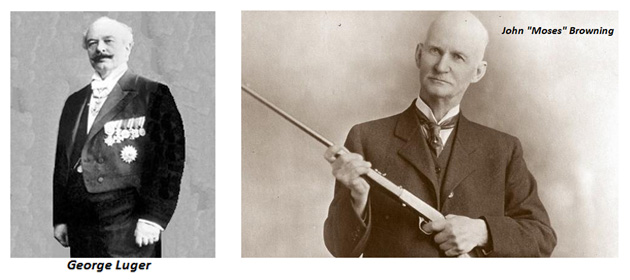
Recents Posts
September 26 2018
Train Like You Fight with a Good Set of Ear Plugs
July 04 2018
A Holster by Any Other Name is Still a Holster
June 03 2018
DNA Tactical Self-Defense Tools
May 15 2018
A Guide to Handgun Holsters
April 19 2018
Waistband v. Shoulder v. Ankle: The Great Holster Debate
April 05 2018
Essential Gear Components for Disaster Survival
March 22 2018
Protecting Your Eyes on the Range is Plain Common Sense
January 24 2018
Customize Your Gear to Win the Fight of Your Life
January 19 2018
How to Choose A Hand-Held Light
January 11 2018
How to Choose a Hands-Free Light
January 08 2018
The Right Holster for Everyday Carry? You are Your Own Expert
December 11 2017
Emergency Outdoors Medicine and Rescue
December 10 2017
Cordage and Accessories for Survival and Outdoors
December 03 2017
Choosing and Using Survival Knives
November 25 2017
The First Priority of Survival
